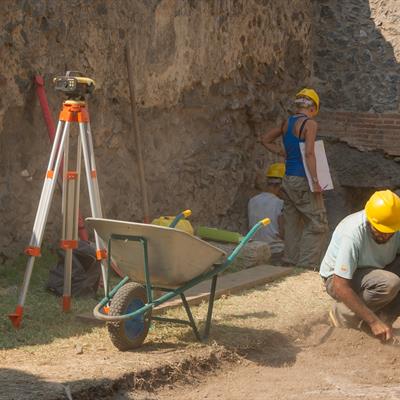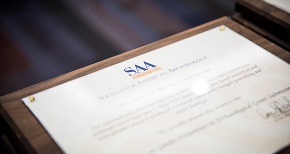
Registration Closed!
Defining Mitigation in Cultural Resource Management
When: November 10, 2020 2:00-3:00 PM ET
Duration: 1 hour
Certification: RPA-certified
Pricing
Individual Registration: Free to SAA members; $69 for non-members
Group Registration: Free to SAA members; $89 for non-members
Kurt Dongoske is the President and Principal Investigator for Zuni Cultural Resource Enterprise. He is also the Tribal Historic Preservation Officer for the Zuni Tribe. Mr. Dongoske has over 40 years of experience as a professional archaeologist working within cultural resource management. Mr. Dongoske has spent the last 29 years working collaboratively with Native Americans in implementing archaeological and ethnographic research. He has designed numerous ethnographic projects that incorporate the traditional environmental perspectives of both the Hopi and Zuni people. Mr. Dongoske is a Registered Professional Archaeologist and holds a Master of Arts degree from the University of Arizona. Mr. Dongoske has published numerous articles on Native Americans, cultural resource management, and compliance.
Kurt Anschuetz is an anthropologist and archaeologist based in Albuquerque, New Mexico. His research foci are the archaeology of late Prehispanic and early Historic period Pueblo agricultural water management and Native, Hispanic, and Anglo cultural landscapes. Dr. Anschuetz currently is assisting the Pueblo of Acoma in preparing a Traditional Cultural Properties study in Chaco Canyon and the greater the San Juan Basin. He has worked with Acoma in contributing to the Mount Taylor Cultural Property Nomination to the New Mexico State Register of Cultural Properties, and is a member of the Pueblo’s team of consultants in the adjudication of the waters of Rio San Jose. He has completed comprehensive cultural landscape studies of Native, Hispanic, and Anglo communities’ relationships with the Valles Caldera National Preserve. Dr. Anschuetz also serves as an Expert Witness for the U.S. Department of Justice in water rights adjudications on behalf of the Rio Grande Pueblos of Cochiti, Isleta, Kewa, Ohkay Owingeh, San Ildefonso, Santa Clara, and Taos.
By definition, "mitigation" is reducing the severity, force or intensity, seriousness, painfulness or grief of an event, development, procedure, or situation. As part of the CRM mitigation processes, direct, indirect, and cumulative effects on cultural resources that fulfill one or more of the National Register of Historic Places’ (NRHP’s) criteria must all be identified in order to address any competent approach to and for mitigation. Two key questions must then also arise within any mitigation process: (1) By whom is mitigation developed and implemented? and (2) Whose interests, concerns, benefits, and well-being are addressed? Historically in the United States, mitigation in CRM has focused on the status and character of a material property itself. Recognition of traditional cultural properties (TCPs) has provided productive directives to identify and consider properties vital to different cultural groups' living identities, histories, values, belief systems, and lifeways. These directives have concomitantly presented a challenge to consider what culturally sensitive and respectful mitigation may—or may not—be. The instructors present examples from their experiences working with the Acoma and Zuni people to illustrate how approaches to mitigation can be sensitive and respectful, as well as lessen the pain, grief, and even wrath, for harms and losses that the people are asked to endure.
- Guidance in designing and conducting compliance with the NHPA that more meaningfully and equitably involves Native Americans
- Greater appreciation and understanding of Native American heritage concerns, including their personal and collective relationships to the landscape
- Recognition of patterns of systematic cultural bias embedded in the language of the NHPA and the ways in which that affects how archaeologists characteristically implement CRM legislative mandates and regulatory protocols


